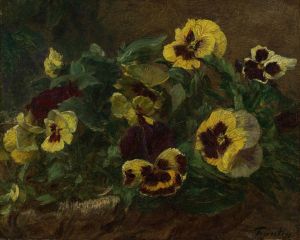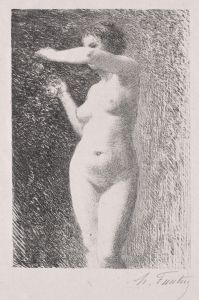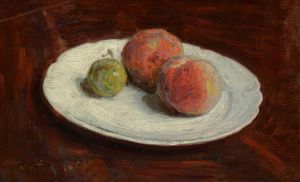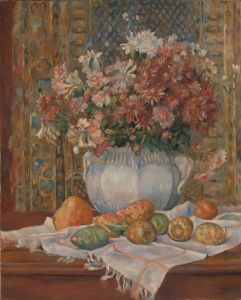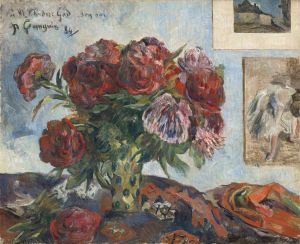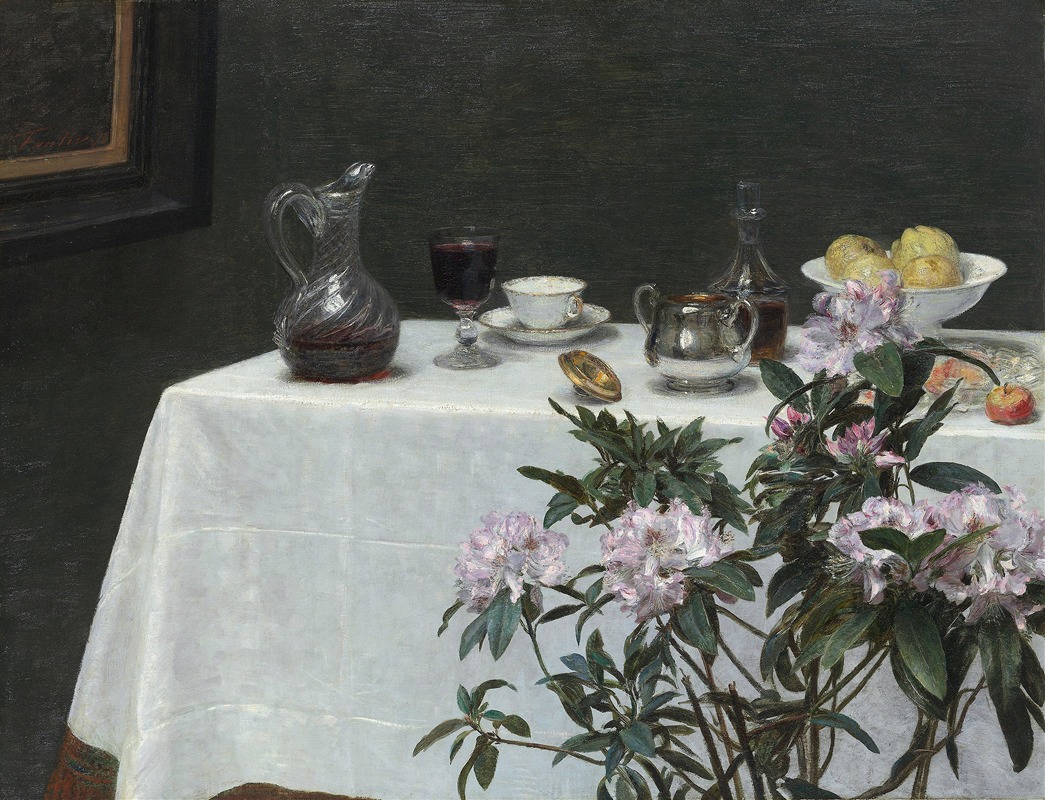
Still Life, Corner of a Table
A hand-painted replica of Henri Fantin-Latour’s masterpiece Still Life, Corner of a Table, meticulously crafted by professional artists to capture the true essence of the original. Each piece is created with museum-quality canvas and rare mineral pigments, carefully painted by experienced artists with delicate brushstrokes and rich, layered colors to perfectly recreate the texture of the original artwork. Unlike machine-printed reproductions, this hand-painted version brings the painting to life, infused with the artist’s emotions and skill in every stroke. Whether for personal collection or home decoration, it instantly elevates the artistic atmosphere of any space.
Henri Fantin-Latour's Still Life, Corner of a Table is a notable example of the artist's mastery in still-life painting. Created in 1873, this oil-on-canvas work exemplifies Fantin-Latour's meticulous attention to detail and his ability to capture the textures and subtleties of everyday objects. The painting features a carefully arranged composition of fruit, flowers, and tableware, showcasing the artist's skill in rendering light, shadow, and surface qualities with remarkable precision.
Fantin-Latour was a French painter known for his still lifes, portraits, and group compositions. He gained recognition during the 19th century for his ability to combine realism with a sense of quiet elegance. His still-life works, in particular, were highly sought after and appreciated for their refined execution and harmonious compositions. Still Life, Corner of a Table is a prime example of this aspect of his oeuvre, reflecting his dedication to the genre and his interest in capturing the beauty of ordinary objects.
The painting is characterized by its subdued color palette and balanced arrangement. The objects in the composition are placed on a table, with a corner of the table serving as the focal point. The arrangement includes a variety of items, such as ripe fruit, delicate flowers, and finely crafted tableware, all rendered with a high degree of realism. Fantin-Latour's use of light and shadow enhances the three-dimensional quality of the objects, creating a sense of depth and realism that draws the viewer's attention.
Fantin-Latour's still lifes were influenced by the Dutch and Flemish traditions of the 17th century, particularly the works of artists like Jan Davidsz. de Heem and Willem Kalf. However, he brought his own sensibility to the genre, infusing his works with a sense of intimacy and quiet contemplation. His still lifes often evoke a sense of timelessness, inviting viewers to appreciate the beauty of simple, everyday objects.
Still Life, Corner of a Table is housed in the Musée d'Orsay in Paris, France. The museum, known for its extensive collection of 19th-century art, provides an appropriate setting for this work, which represents a significant contribution to the still-life tradition. The painting continues to be admired for its technical excellence and its ability to convey a sense of tranquility and refinement.
Fantin-Latour's legacy as a still-life painter remains strong, and works like Still Life, Corner of a Table serve as enduring examples of his artistic achievements. Through his careful observation and skillful execution, he elevated the still-life genre, leaving a lasting impact on the art world.






